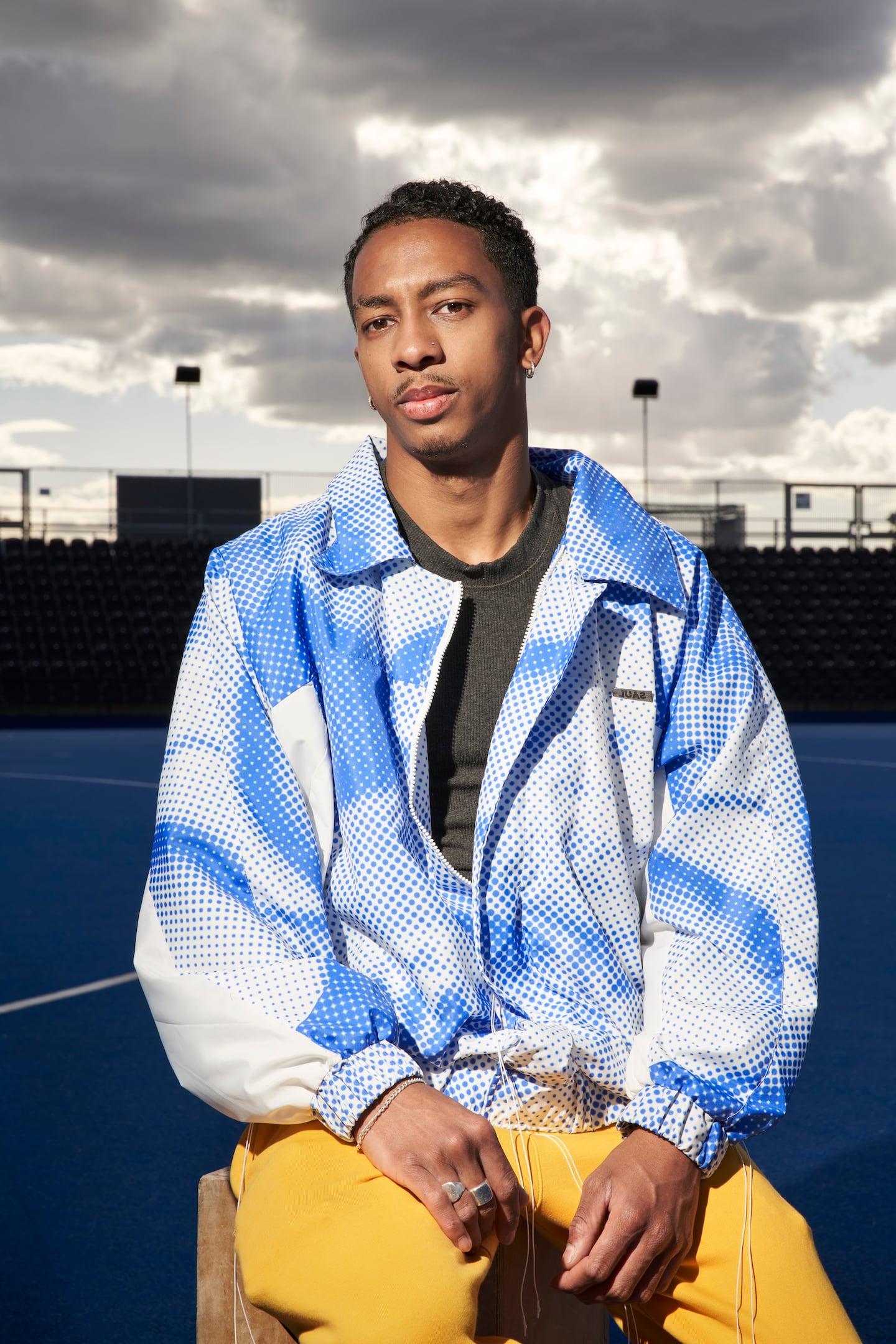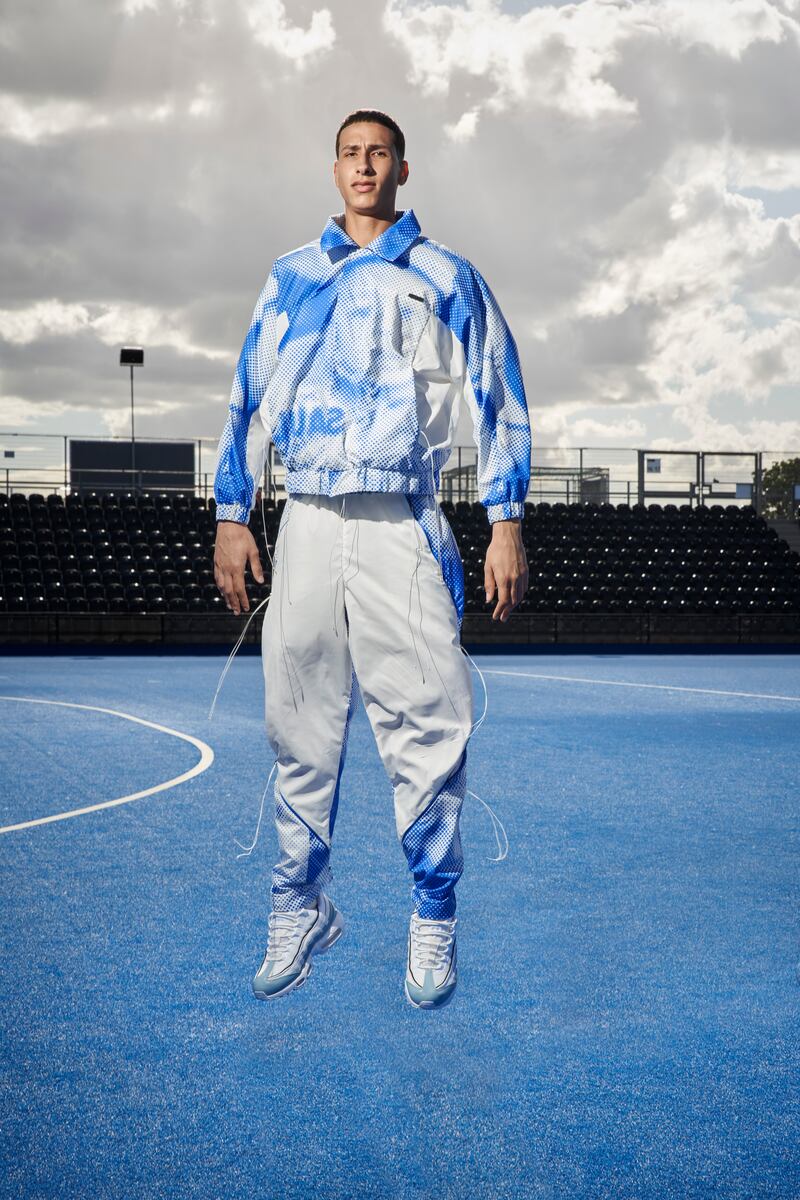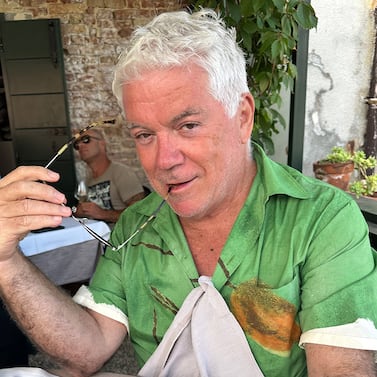
The Business of Fashion
Agenda-setting intelligence, analysis and advice for the global fashion community.

Agenda-setting intelligence, analysis and advice for the global fashion community.

LONDON — On a crowded shelf in Saul Nash’s crowded studio, a kitschy little trophy takes pride of place. He won it for his voguing at the Technicolour Kiki Ball last year. Usually, he walks for the House of Revlon, one of the legendary houses of the main ball scene. The Kiki scene is younger and Nash participated as a “007,” which means he isn’t affiliated with a Kiki house. He earned his prize by walking the “old way.” Anyone who has seen Willi Ninja, the godfather of voguing, in the 1990 documentary “Paris is Burning” will know exactly what that means, with all its complex, enthralling choreography.
Movement is the key that unlocks Nash and his work. His grandparents were Guyanese, his mother is Bajan. He grew up in London in a house full of music. He was dancing as soon as he could walk. If you need to attach a label to the collections he has been showing since he graduated from the Royal College of Art in 2018, activewear — clothes for movement — is a start.
Nash has never stopped dancing. He has a parallel life as a choreographer. His label’s logo is a mirror image of his first name, partly because he didn’t feel 100 percent confident putting his name on the product at the beginning, but mostly because “it’s the dancer narrative; dancers always practice in the mirror and when you look in the mirror it reads SAUL.”
During the long months of lockdown, Nash combined fashion and dance in films made by his partner Fx Goby. One of them, “Twist,” featured a street gang standoff. Two antagonists close in on each other, glaring balefully. You’re waiting for the knife… but then they kiss, tenderly. “Twist” was a watershed for Nash, personally and professionally. He describes it as “this idea that you assume one thing but then your expectations are completely twisted.” Much like his own expectations were twisted when the friends he feared would never accept his sexuality turned out to be completely supportive.
ADVERTISEMENT
He compares his work to therapy. “It helps me work through certain things. Sometimes I realised why things were the way they were by making the collection. Like ‘Twist’ for example. It was probably something in my subconscious that was constantly going on, and through realising that collection, it resolved itself. I guess each season I design a different collection, it’s all part of one investigation.” So you might wonder about his latest, launching on Monday as part of the digital-physical hybrid that is London Fashion Week this season. It’s called “Siblings,” and, if last season’s key visual was an abstract image of the Guyanese flag, this time it’s a photoprint of Saul and his older brother.
The collection is infused with the spirit of the clothes Nash’s brother, his uncle and their friends wore when he was growing up. The 90s. Sean John. Terrycloth. “I’m looking into sports references. I had a terry tracksuit. We always used to go to Wood Green and buy them.” SAUL is picked out in chenille, just like SEAN JOHN once was. What’s new is the materiality, the aerodynamism, the restraint that refines P.Diddy excess into a new vision for activewear.

His work space comes courtesy of Somerset House’s residence programme. He’d originally intended to use it for his dance practice. At that time, his fashion studio was way out east, in Stoke Newington, close to his factories. “I had this delusional idea that I could be two people, choreographer and designer.” But over the past year, two have become one at Somerset House, as Nash’s brand grew sales by 150 percent. He lost his Japanese business during the pandemic but he more than made up for it with new customers, notably in the UK, where Selfridges and Browns are among the stores that carry SAUL. His factories are no longer just down the road. Now, they’re in the Netherlands for the wool knits, Portugal for the nylon and Turkey for the jersey knits. In fact, while we’re talking, his assistant arrives from Turkey with two suitcases of samples for “Siblings.”
The growth spurt is relative, because Nash started small. And it’s still just him, a production assistant, an intern and a freelancer. In April, he won the Woolmark Prize, which came with 200,000 Australian dollars (about $145,000), and the business has finally reached a point where Nash can pay people, himself included. But one thing that he insists won’t grow is the size of the collections.
For “Siblings,” Nash is showing 20 or so looks. But less really is more with him, because every piece is so considered. On the one hand, there’s his appetite for innovation. “I’m always interested in finding out technical innovations to make the product actually functional. Case in point: Nash has developed a fully functional waterproof jacket with global bonding specialists Bemis in Aylesbury. (The bio-based bonding is made with corn starch.) His factory in Portugal is able to replicate it.
On the other hand, there is Nash’s commitment to sustainability. He’s aware of the contradiction that is “sustainable fashion” in a sector that promotes overconsumption. “Fashion is about creating more and more, so there’s no way it can be 100 percent sustainable. I encourage people to not think about trends but something they could keep. That’s why you have to make it a really good quality product.”
Prepping for his Woolmark submission turned Nash on to the innovative and sustainable properties of the world’s oldest fibre. “When you make activewear, there’s always that fine line between synthetic fabrics and natural fabrics. Wool made a lot of sense for me because it’s a way to bring a natural fibre into my range that is biodegradable and has moisture-wicking properties. So it functions for sports.”
In his research, Nash found it was hard to use 100 percent Merino wool. It’s usually mixed with polyester or nylon to make it stronger and stretchier. But he worked with Knitwear Lab in Amsterdam to find a pure wool fibre that was both durable and super-stretchy.
ADVERTISEMENT
He has also collaborated with Sheep Inc, a fiercely eco-conscious brand that has managed to produce garments that are knitted seamlessly. It’s their innovation, but it’s one he’s been hungry to explore since his days at the RCA. As he unpacks the Sheep Inc. samples, he looks at the back wall of his studio, hung with pieces from his early collections, and marvels, “I never would have thought back then when it was all nylon that it would ever be what’s in my hand right now.”
Nash studied dance at school, then joined a youth dance company when he was 17. “The plan at that point was to be a dancer, but I always had this conflict between art and design and dance, which drove me to study performance.”
While studying for a BA in performance design and practice at Central Saint Martins, Nash was also on stage with Avant Garde Dance under the directorship of renowned choreographer Tony Adigun. “I really loved creating a narrative in a space with the human body.” At the same time, he realised his work with costume and friendships with fellow students like Ibrahim Kamara were tipping more towards fashion than performance. “I wanted to create something that didn’t just exist in a performance space. I was looking for something that was more outside, in the world.”
I don’t mind wearing a tracksuit to the Fashion Awards.
His first application for a Masters course in menswear design at the Royal College of Art failed. “But Zoe [Broach, the RCA’s head of fashion] had remembered me and after I didn’t get in, she sent me an email that said something like, ‘Like a saxophone player needs to know his music, you need to go away and learn the keys,’ which was the best advice I’ve ever got.” Nash went away, taught himself to sew, took a course in portfolio preparation, and went back for a second interview with a dancer, who performed in an outfit he’d made. He was accepted.
“Everything came completely full circle at the Royal College,” he says now. “One amazing thing about Zoe was we didn’t really show clothes in a fitting, it was a performance for the whole of my Masters. It just made so much sense to get all my friends, put the clothes on them and have them dance. This weird progression of where I was coming from was really nurtured and encouraged. I knew it would maybe be really hard to get a job in this thing that I’d created, but it was what I needed to do.”
At the time, Nash wasn’t thinking about transforming activewear. “It was re-addressing the narrative around it, feeling like there were contexts to deconstruct.” When he was younger, he felt weird wearing tracksuits to parties. “Now I can reclaim it. I don’t mind wearing a tracksuit to the Fashion Awards.”
Nash refers to masculinity often. One curious thing I noticed is that he always talks about men, never boys. His older brother, his uncle and their friends were the men around him while he was growing up. The youthful dancers in his troupe are men, never boys. “I tell my story through men because it’s the story I’m relating to,” he muses. “Even though the men in my work might look young, I can see that they’re adults. Being a boy is tapping into adolescence. My clothing is for men.”
“But I’m also conscious being in a voguing house that there are non-binary people, there are females, trans individuals, and there are people who identify within the male spectrum but they’re not necessarily cis men. And I think that’s an interesting thing to unpack within masculinity. I do find issues with toxic masculinity, it drives me nuts. I think it’s such a dangerous thing. That’s probably why it’s important for me to paint men through a different lens as well; to show there’s a sensitivity within.”
ADVERTISEMENT
A couple of hours with Saul Nash is a recharge. The daring, energy and optimism of a young creator in mid-liftoff is so palpable, it’s all but unnecessary for him to declare, “I love what I’m doing and what I’m doing is my life.” And life’s too short to get mired in negativity. “It’s just how I am, very much positive. Yeah, like business is difficult to run, but you always stay positive.”
“Zoe always said flow like water,” he adds, chuckling. “I think it’s from Bruce Lee.”
British-Guyanese menswear designer won an AU$200,000 ($144,000) cash prize to put towards business development.
BoF’s editor-at-large reflects on a remarkable season brought forth by the city’s most creative young minds.
Editor, stylist, musician, furniture designer and now creative director of Off-White — Kamara is a natural successor to the master of multitasking Virgil Abloh.

Tim Blanks is Editor-at-Large at The Business of Fashion. He is based in London and covers designers, fashion weeks and fashion’s creative class.
The former CFDA president sat down with BoF founder and editor-in-chief Imran Amed to discuss his remarkable life and career and how big business has changed the fashion industry.
Luxury brands need a broader pricing architecture that delivers meaningful value for all customers, writes Imran Amed.
Brands from Valentino to Prada and start-ups like Pulco Studios are vying to cash in on the racket sport’s aspirational aesthetic and affluent fanbase.
The fashion giant has been working with advisers to study possibilities for the Marc Jacobs brand after being approached by suitors.